Discover Blue City of India: Why is Jodhpur called Blue City in India?
Jodhpur , the second-largest city in Rajasthan, is famously known as the “Blue City of India” due to its mesmerizing sea of blue-painted houses. This iconic hue stretches across the historic walled old city for over 10 kilometers, offering a breathtaking sight to all who visit. Originally, these blue homes indicated the residence of Brahmins, the priestly caste in India, but over time, the color spread to non-Brahmin homes as well. Some say the blue pigment helps repel insects, adding another layer of charm to this azure landscape.
Also Known as Sun City of India
Located on the edge of the vast Thar Desert, Jodhpur is also known as the “Sun City of India” for its bright, sunny weather throughout the year. The city is rich in history and culture, boasting famous landmarks such as Mehrangarh Fort, one of India’s largest forts, and numerous palaces, gardens, lakes, and bustling bazaars.
Tourists are drawn to Jodhpur for its vibrant textile industry, exquisite furniture, and mouthwatering cuisine. However, the unforgettable view from Mehrangarh Fort, overlooking the blue-tinted homes against the desert backdrop, is what truly sets this city apar

Why Jodhpur called as the Blue City of India
Jodhpur, affectionately known as the “Blue City of India” is surrounded by fascinating myths, theories, and stories about its iconic blue hue. While there’s no definitive historical record explaining how or why Jodhpur earned this nickname, the city’s blue charm continues to intrigue visitors and locals alike. So, in this blog, let’s embark on a journey to uncover some of the interesting theories, hidden stories, and lesser-known myths behind the question: Why is Jodhpur called the Blue City of India?
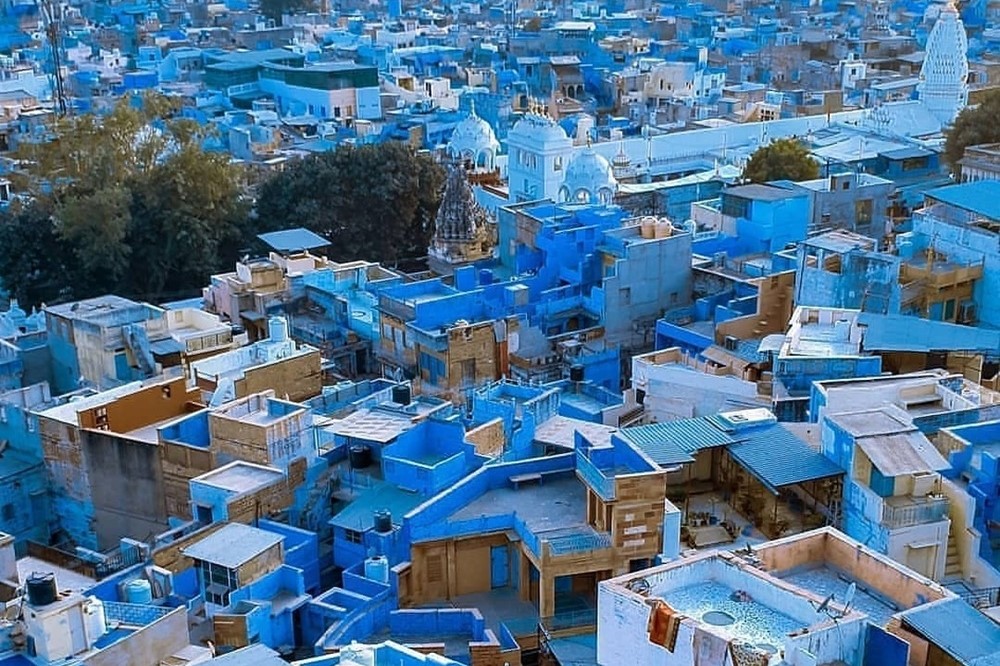
One popular theory suggests that the blue color originally marked homes belonging to Brahmins, the priestly class in India. Over time, however, non-Brahmins also began to adopt the color, and soon, the entire city took on its signature blue appearance. Another theory claims that the blue paint helped keep homes cool in the scorching desert heat, while some believe it has insect-repelling properties.
Though these explanations vary, the mystery only adds to Jodhpur’s charm. Let’s dive deeper into these stories and discover how this enchanting city became the “Blue City of India” we know and love today!
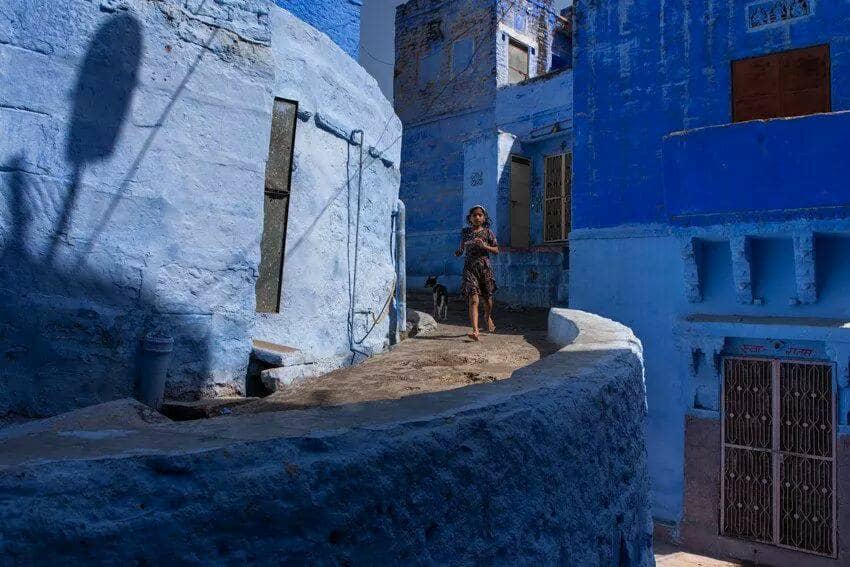
Blue Color and Its Connection to Lord Shiva
It’s widely believed that blue is associated with Lord Shiva. During the legendary event of Samudra Manthan, Lord Shiva drank the deadly poison Halahala to save the earth. This poison turned his body blue, and since then, his devotees consider blue a divine color. Many people even paint their houses blue in devotion to Lord Shiva.
Blue as a Sign of Social Class
In India, blue is often connected with sovereignty and power. In Jodhpur, local myths and tourist guides suggest that the Brahmins, India’s priestly caste, painted their houses blue to distinguish themselves from lower castes. Blue was seen as a royal color, and even kings recognized Brahmins by their blue-painted houses, especially during rituals.

Blue Paint as Termite Repellent
Another interesting reason behind the blue color is termite prevention. Due to Jodhpur’s hot and semi-arid climate, termites often damage buildings. To protect their homes, people mixed copper sulfate and limestone in their paint, which not only repels termites but also turns blue under certain conditions. This gives the houses their famous royal blue color.
Calming and Soothing Effect of Blue
One of the more practical reasons for the blue color is its cooling effect. Jodhpur experiences extreme heat in summer, and blue is known for its calming properties and ability to reflect sun rays, helping to keep homes cooler during the warmer months.
When you visit Jodhpur, you may come across other fascinating theories about the city’s blue houses, but one thing is certain: the Blue City of India is a captivating sight. The best place to view the blue-painted houses is from the top of Mehrangarh Fort, which sits 400 meters above sea level.
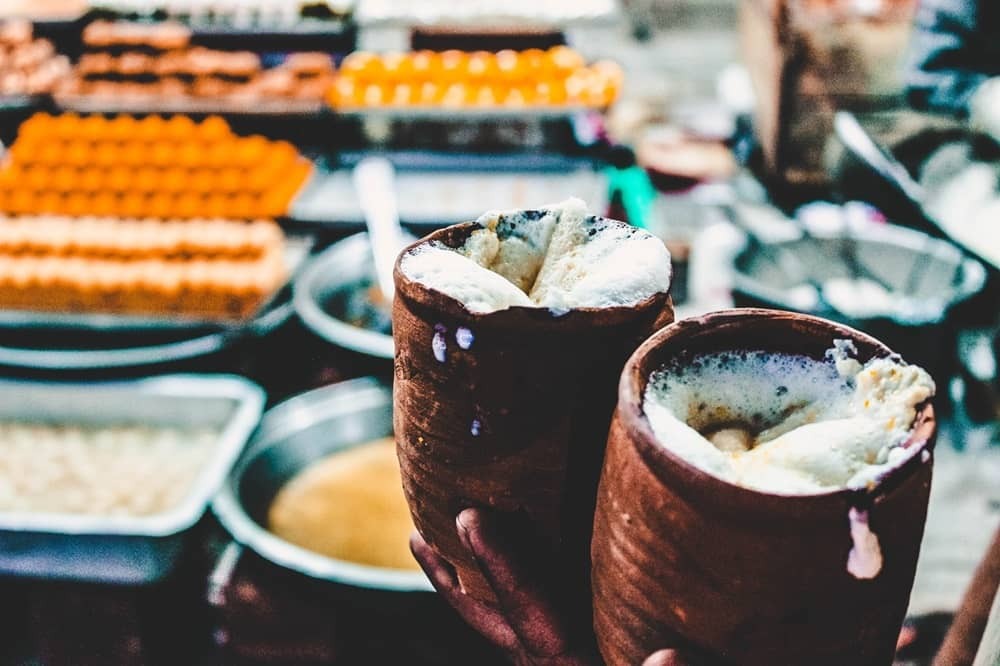
How to Reach Jodhpur ” Blue City of India
By Air
The Jodhpur Airport is a domestic airport connecting cities like Delhi, Mumbai, Udaipur, and Jaipur. It’s located about 5 km from the city. For international travelers, Delhi Airport is the nearest international airport.
By Road
Jodhpur is well connected by national highways to major cities such as Jaipur (330 km), Delhi (585 km), Jaisalmer (307 km), Bikaner (250 km), and Agra (563 km). Buses run frequently between Delhi and Jodhpur.
By Rail
Trains from Jodhpur to Delhi, Mumbai, Chennai, and Kolkata are easily available. Traveling by train is a convenient and cost-effective option. The luxurious Deccan Odyssey train also includes Jodhpur in its Indian Odyssey and Indian Sojourn itineraries.
So, don’t wait—explore Jodhpur, the second-largest city in Rajasthan, and immerse yourself in the beauty of the Blue City of India
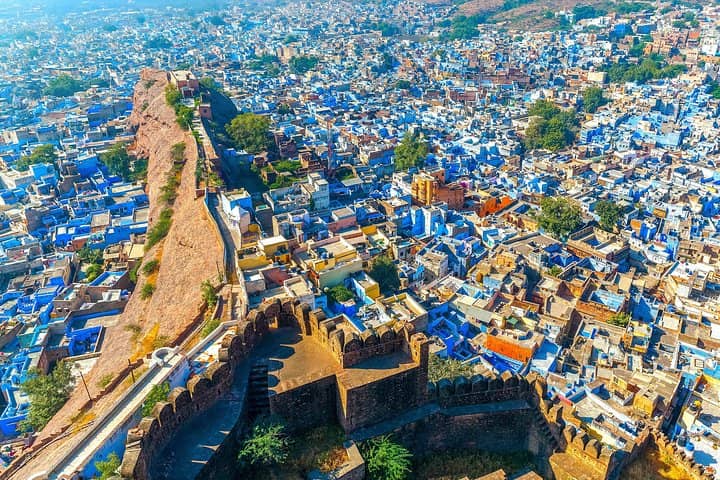
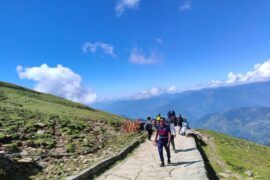
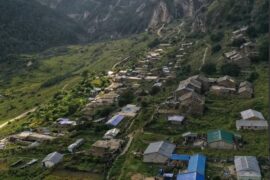
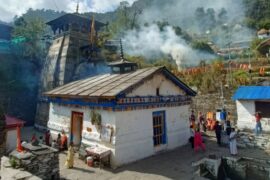
Comments are closed.